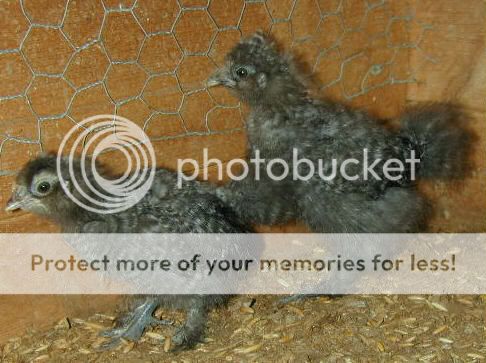I'm attempting to breed cuckoo silkies, and I'm wanting to make sure I have the correct understanding of how the gene works. I have a cuckoo hen in with a black roo. I was told that any offspring between them would be sex-linked, and that it would be the males that would have the barring with this mating. Is this correct? If so, will the males always be barred, or is there a chance that some may also be black? (I'm thinking that "yes" is the answer to this, but I just want to be sure.)
I just had a dozen chicks hatch in the incubator, some from my cuckoo, and some from my blue hen. Since they were both sharing the same nest, I know that there is going to be a higher percentage of black chicks to other colors, but the ratio I got is really lopsided. Out of 12 chicks, I've only gotten 2 blues and 1 cuckoo. The up-side to this is that if the cuckoo is male, I'll have plenty of black females to work with, and possibly more cuckoos next time around. I just didn't want it to take so long!

Miss Cuckoo is out sitting on 10 eggs at the moment, so I'm just waiting to see what that clutch brings. Maybe more of those eggs are hers.
I just had a dozen chicks hatch in the incubator, some from my cuckoo, and some from my blue hen. Since they were both sharing the same nest, I know that there is going to be a higher percentage of black chicks to other colors, but the ratio I got is really lopsided. Out of 12 chicks, I've only gotten 2 blues and 1 cuckoo. The up-side to this is that if the cuckoo is male, I'll have plenty of black females to work with, and possibly more cuckoos next time around. I just didn't want it to take so long!

Miss Cuckoo is out sitting on 10 eggs at the moment, so I'm just waiting to see what that clutch brings. Maybe more of those eggs are hers.







